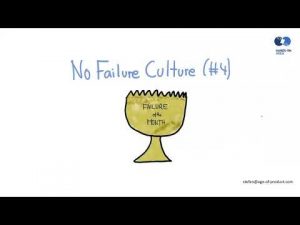Search engine optimization helps you to leverage your business with the organic search results on search engines like Google, Bing, Yahoo and more.
The ultimate SEO checklist has various dimensions to work and improve ranking and traffic with the enhancement of user experience. I will explain the basic and the funnel of SEO to give a better understanding of how to run and grow your business.
Basic SEO Funnel
1. Keyword Research:
No business or marketer can deny the role and relevance of keywords. If you fail in selecting the right keywords, you will drive significantly less or even zero traffic no matter how much effort you put in.
As per the competition and the size of your business, you can select either a short tail keyword or long-tail keyword. Choosing the right keyword is the first step of success in terms of driving traffic, leads, and finally, sales.
Note: For most of the business, long-tail keywords are more appropriate to bring revenue to the company.
2. Content Creation:
After finding the right keyword, choosing the content format and outlining, writing, creating visuals, formatting content with screenshots and then doing the final edits and quality check before posting are the most crucial steps of compelling content creation.
3. On-Page SEO:
On-Page SEO or On-Site SEO is another best tool for SEO. The best part is- on-page SEO can hook your ranking if it is done in the right way. To accomplish on-page SEO, you need zero investment and one-time effort.
The most crucial things that you need to remember in on-page SEO are;
Title: Front-load the title with your main keyword.
Meta-description: It should be compelling, original, not more than 160 characters with the keyword
H-1 Heading: If you are not using WordPress, then make sure you have one H-1 heading, as it is the 2nd strongest signal after the title that tells about your content to the search engines.
H-2, H3, .. Headings: Make your text readable for the users. Try to use heading and subheading of not more than 300 words and 150 words, respectively.
LSI Keywords: Use LSI keywords or the synonyms of the primary keyword in your content. You can use the tools like LSIchart and AnswerThePublic that can help you in finding at least 100 LSI keywords of your main keyword. Try to load these keywords throughout your content.
Keyword cannibalization: Take good care of keyword cannibalization, as it can confuse Google and other search engines. Your ranking can drastically fall and results can be damaging.
URL: Make your URL short and try to include your focus keyword in the URL. It will not only increase the visibility in the eyes of search engines but also improve ranking.
Internal and External Links: Use 2-3 external links by giving the reference to the sites that are supporting your statistics and facts. Also, use as many relevant internal links as you can that can add value to your users. The best example of using internal/inbound links is Wikipedia. They rank on the first page of Google for almost every keyword.
Delete Zombie Pages: Zombie pages are those pages that drive no traffic on your site. By deleting these pages, your traffic, raking and site responsiveness will increase magnificently.
Update old content: Many marketers and loggers produce tons of content. They believe in a myth that producing tons of content is the ultimate path of success, and if they post less than one content in a day, the business will fail. And this leads to wastage of a lot of resources, money and time.
4. Off-Page SEO:
When you or some other people do some practices that help to establish your website on some other sites in an attempt to raise the ranking, visibility and traffic are known as off-site or off-page SEO.
Off-course off-page SEO goes beyond link building. But one of the best and the most challenging practices of off-page SEO is link building.
People use some strategies like HARO, guest posting, collaborate with giant media contributors like Forbs and Entrepreneurs, social bookmarking, forum submission, and blog dictionaries to increase the presence of their site on the internet.
Some pro-off-page strategies are;
- Create comprehensive industry reports that go viral and people link on their blogs
- Make amazing infographics.
- Mention micro and celebrity influencers in your blog and outreach them where they can help you in promotion of your content.
- Stealing the link building opportunities from broken links/404 error page links.
- Participating in events, summits and interviews, podcasts.
- Joining the community and Q/A group like Facebook group, Quora, Reddit.
- You can also buy an expired domain in your niche and redirect them with 301 code on your site. The juices of that site will transfer on your site and this way you can also boost your Site’s DA.
Things you must never practice in Off-Page SEO:
- Do not Buy Links – Google can ban your site permanently. So, be aware of frauds who are selling 2500+ links in a few dollars.
- Never go with paid guest postings, as reputed sites like Forbes, Entrepreneur will never ask you for money.
- Avoid Fiverr as it’s a waste of time and money. Also, their services are pathetic.
- Private Blog Networks (PNB) is now outdated. So, do not get involved in it and avoid yourself from a penalty.
- Do not earn hundreds of shady or spammy links on push-button backlinks.
- Unfortunately, today also, many marketers are making a blog comment in hundreds and thousands on irrelevant sites. These are spam and unfair practices that Google takes very seriously.
5. Technical SEO:
Optimizing your site and web pages for the search engine spiders by which they can crawl and index your site are the significant part of technical SEO. The entire process of technical SEO is critically important as it plays a major role in the ranking of your site.
It makes your site and pages super engaging and visible for both the users as well as search engines robots. All the parts of technical SEO may not be equally important in ranking and traffic generation. But before ignoring one, you should know the consequences of that on your site.
The important branches of technical SEO are;
- HTTPS secured site
- Mobile-friendly Site
- Site’s load speed
- Clean and clear site’s architecture
- SEO friendly URLs
- Breadcrumbs Navigation
- Internal Links
- Crawling and Indexing
- HTML and XML Sitemaps
- Robots.txt file
- HREFLANG for international websites
- AMP Pages (Use Google AMP)
- Broken Links
- Rich snippets
- Noindex the tag pages
- Redirect codes
Infographic on Complete SEO Checklist:
![Basic SEO to Beginner’s [2020]: Onpage, Offpage and Technical Basic SEO to Beginner’s [2020]: Onpage, Offpage and Technical](https://www.onlinesalesguidetip.com/wp-content/uploads/2020/09/Basic-SEO-to-Beginners-2020-Onpage-Offpage-Technical-.png)
Image Courtesy: theblueoceansgroup.com/seo-checklist
Conclusion:
Hope you enjoy the read and grasp something that you can implement on your site to improve better footfall of traffic and hook your ranking.
Now, it’s your turn.
Leave in the comment box, what are your most vital areas of SEO and where you find yourself in a big problem?
Also, if I missed out something adding, please do give your suggestions. All thoughts and opinions will be welcomed.
Digital & Social Articles on Business 2 Community
(121)





